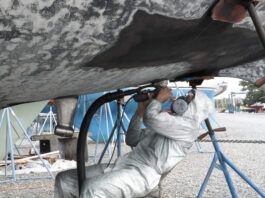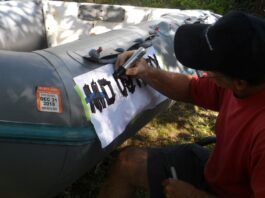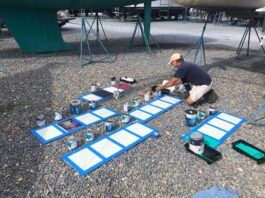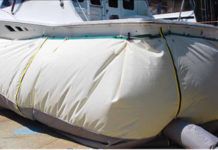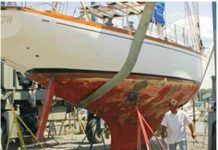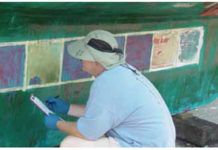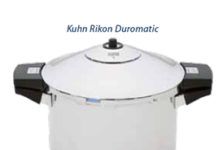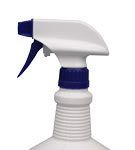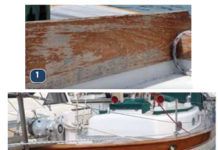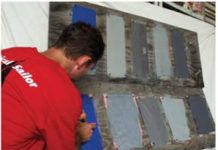Sodablasting 101
When deciding on a process for clearing antifouling paint and coatings off the bottom of your boat, first define your goals and try to be as minimally invasive as possible. If your boat bottom needs more than a scrubbing but less than a full peel, sodablasting is a technique that will strip bottom paint but leave gelcoat intact. The unique softness of the calcium carbonate powder in sodablasting is effective, and the tented setup keeps the old coating contained. This report outlines the sodablasting process, calculates the cost in time and money, and compares its performance and cost-effectiveness to other bottom-stripping techniques we've tested.
A Mathematical Decision-maker
An easy way to compute the do-it-yourself labor commitment involved is by timing how long it takes to scrape clean two 1-square-foot patches. The first is in the center of the least well-adhered paint; the second is in the midst of an intact portion of the bottom. Dry scrape each section with a thin-bladed putty knife and a sharp drag-type scraper, noting the time it takes to remove about 90 percent of the coating.
Past Adventures with Chemical Strippers
Our foray into sodablasting follows years of testing several different ways to remove bottom paint. Although you can simply attack the bottom paint with a power sander (an 8-inch sander-polisher is probably the most common tool for this purpose), this approach is messy, back breaking, and can expose the do-it-yourselfer to various health hazards. It can also lead to dings and divots in the gelcoat caused by overzealous sanding. Many yards prohibit do-it-yourselfers from sanding antifouling, or offer specific guidelines on how it can be carried out-often prescribing a chemical stripper to help contain the paint residue.
Practical Sailor’s 2011 Gear of the Year Picks
Each year, as the fall boat shows—and the deals that come with them—appear on the horizon, we pore over the numerous products we’ve reviewed in the previous 12 months to select the cream of the crop for our Editor’s Choice awards. We hope the list will help readers better navigate any boat-show or end-of-season shopping. This year, we picked from the Best Choice products evaluated in the September 2010 through August 2011 issues. The 2011 GOTY roster includes an electric outboard, some stout bullet blocks, electric marine toilets, bilge pumps, chafe gear, and marine maintenance products like bottom paint.
Maintenance All-Stars
With the gazillion marine maintenance products out there, it’s an annual challenge to narrow the field down to just a few superior products for our Gear of the Year (GOTY) list. This year, our top maintenance picks came out of our endless antifouling-paint testing and our performance evaluation of multi-purpose cleaners—products we suspect most of you buy and use regularly.
The Best Marine Varnish: Exterior Wood Finish Tests
Testers applied dozens of exterior wood finishes (22 one-part varnishes, six two-part varnishes, 18 synthetics and satins/varnish alternatives, and eight teak oils and sealers) to small panels of bare solid teak and set them out to face the rigors of South Florida's weather. Two years later, our search continues for the ideal wood finish-relatively easy to apply, easy to maintain, lasts multiple seasons, and is affordable. Given that most wood coatings are rarely expected to last longer than two years in the marine environment-particularly in super-sunny locales-its no surprise that weve seen more significant changes in the coatings in the last six months than we had in previous checkups. With the exception of a few two-part products, the test coatings had lost their sparkle at the two-year mark, ratings slipped across the board, and weve come to accept that perhaps theres no Holy Grail of exterior wood finishes.
Whey Overdue for a Recoat
Practical Sailor often supplements panel testing with product challenges aboard our test boats to see whether top products still earn their keep in the real world and to try out new products. Two such evaluations are our exterior wood finish tests. In the January 2011 issue, we introduced a head-to-head matchup of varnish alternatives—market-newcomer PolyWhey from Vermont Natural Coatings versus perennial favorite Interlux’s Sikkens Cetol Natural Teak—that had been applied to our Cape Dory 25 test boat. For that test, we’ve just let nature run its course: no band-aid touchups, no maintenance coats, no freshwater rinses, no TLC at all.
A Peek at Inflatable-dinghy Paint Test Panels After One Year
Finding a coating that sticks well to PVC or Hypalon is not easy. Because the coated surfaces are flexible, expanding, and contracting significantly as the tubes are inflated and deflated, the coating must also have some elasticity. It must also be abrasion resistant. In June 2010, Practical Sailor launched a long-term test of five paints marketed as coatings for inflatable boats. We tested products from Marine Design Research (MDR)-Amazon (Inflatable Boat Top), Flexdel (Flexabar), Tuff Coat, and Polymarine (Flexithane and Superflex). After a year of suffering the Florida sun, heat, and rain, the panels were returned to the test bench, and testers found some surprising results.
Inflatable-dinghy Paint Torture Test
Durability and elasticity are our principal comparative factors in this test, but testers also considered ease of application, coating adhesion to substrate, resistance to abrasion, and price.
What About Bottom Paint for Inflatable Boats?
If you have your heart set on applying antifouling to an inflatable (PVC or Hypalon), there are several options available. All of the so-called inflatable bottom paints are water-based, flexible coatings. Pettit Hydrocoat, Pettit Inflatable Boat Antifouling Paint, Interlux Fiberglass Bottomkote Aqua, and Sea Hawk Inflatable bottom paint (www.seahawkpaints.com) are just some of the options.

































